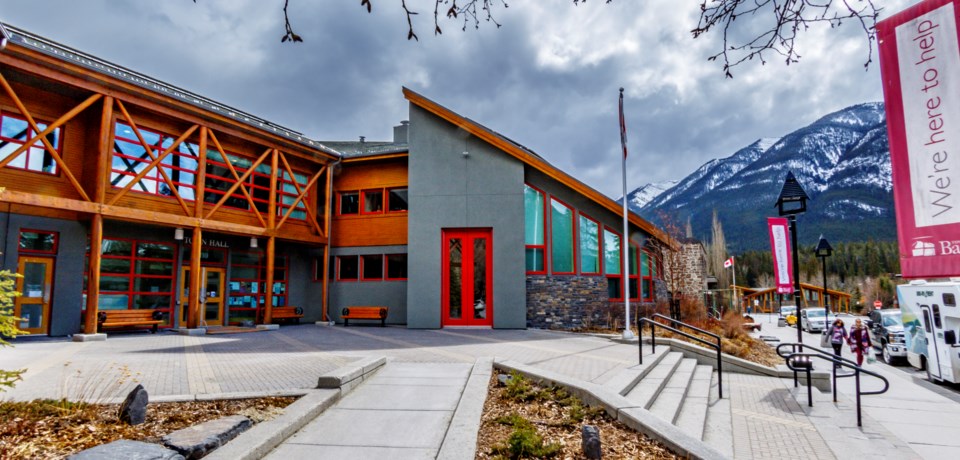BANFF – Most of Banff’s seniors want to stay in their own homes and community for as long as possible.
Town of Banff officials say that was one of the key takeaways from a seniors’ housing survey of 271 residents over the age of 60, which represents about 25 per cent of the local seniors’ population.
While concerns centred on housing costs, wanting to be close to family, availability of dwellings and accessing appropriate support services in the community, officials say 93 per cent of those surveyed were satisfied or very satisfied with the current housing situation.
“Many residents are currently satisfied with their home situation, they wish to age in place, and health circumstances will likely be the predictor for housing changes or modifications in future,” said Sharon Oakley, the Town of Banff’s housing sustainability manager.
“It appears that a sustained focus on the provision of appropriate supports to further seniors’ abilities to age in place will be the key for our community, especially over the next five to 10 years.”
The survey, which was designed with input from the Banff Inclusive Housing Committee (BIHC), falls out of one of council’s strategic plan priorities to research the supply and demand of seniors’ housing in Banff.
Residents over 60 years of age represent 13 per cent of Banff’s population.
Several studies indicate having the health and social supports and services needed to live safely and independently in the home or community for as long as possible, referred to as aging in place, reduces the emotional and physical hardships associated with leaving a familiar place.
Oakley said there is significant evidence that aging in place with the right support services can also potentially avoid the high costs associated with acute care such as emergency room visits and hospital admissions.
“Aging in place allows seniors to maintain social networks with family members, friends and community members and maintain personal identity,” she said.
The survey, which began in June, found that 10 to 30 per cent of respondents currently have accessibility features in their homes, while a further 55 to 73 per cent indicated they would need to add features or make adjustments as their health or well-being diminishes.
About 60 per cent of respondents wish to stay in their own home as they age; 25 per cent were unsure and 15 per cent did not wish to stay in place.
Oakley said reasons for considering a move included layout and design of the home, insufficient retirement income and a desire to downsize.
“A concern that came up was the sort of morphing from a traditional income where they were working, to a retirement fixed income; that certainly was causing some concern for some individuals,” she said.
Oakley said many respondents indicated their housing options would likely be dictated by future health circumstances and affordability factors.
“Many seniors feel they will need alternative arrangements in 10-plus years, but are uncertain as to the specifics as much of it will be dependant on health and mobility capabilities,” she said.
Karen Thomas, chair of the BIHC, said the survey’s findings were in concert with other parts of Canada in that the majority of seniors prefer to age in place as long as possible.
She said BIHC is still analyzing the report in greater detail to determine where, and if, other additions to in-home supports are need.
“I would like to say to those in our community who are disabled and in the senior category, but do not fit into the ‘majority’ component of this study and cannot age in place, you are not forgotten,” said Thomas, who is also a mayoral candidate in the Oct. 18 municipal election.
“The 29 people who have had to move to Origins are a subgroup that represents a real need and for the most part they are not included in the study. Those in staff housing that are wondering where they will go, we see you and hear you.”
Several councillors questioned administration on what additional supports the Town of Banff can provide to help support seniors’ needs other than the existing program and services being offered.
“It’s always good to go out and ask the community what their needs are, and I think we’ve heard pretty clearly from this group about their situation and the things they are thinking about as they age into the future,” said Mayor Corrie DiManno. “Have we identified any supports that we think we should be starting to focus on for the future?”
Some areas for consideration in seniors’ housing include suitable floor plan layouts, affordability, in-unit accessibility, dwelling access, requirements for mobility aids and potential gaps in availability of units and appropriate supportive services such as home-care.
Rather than building more seniors’ specific housing, Oakley said the need for now seems to be focused on modifications to or retrofitting existing homes.
“Affordability is coming up as a significant factor, it’s about how do people retrofit their homes,” she said.
“When we are talking about aging in place, are there grants or what kind of situations can we help provide supports to allow them to do that?”
Councillor Grant Canning, a Banff council representative on Bow Valley Regional Housing, said the 34 self-contained units at Mount Edith House are currently at full occupancy, while Cascade House sits at about 75 per cent full.
He said it’s rare for units at Mount Edith House to become available.
“When they do, the waitlist has fluctuated between six and 10 people over the past couple of years,” he said.
By comparison, Canning said Cascade House, which is an assisted living facility, has not been fully occupied since 2019, noting there were 15 of 22 units occupied as of last week.
“While there is a waitlist there as well, just because someone is on the waitlist doesn’t mean, one, they’re necessarily the right fit, or two, they’re ready to move in,” he said.




